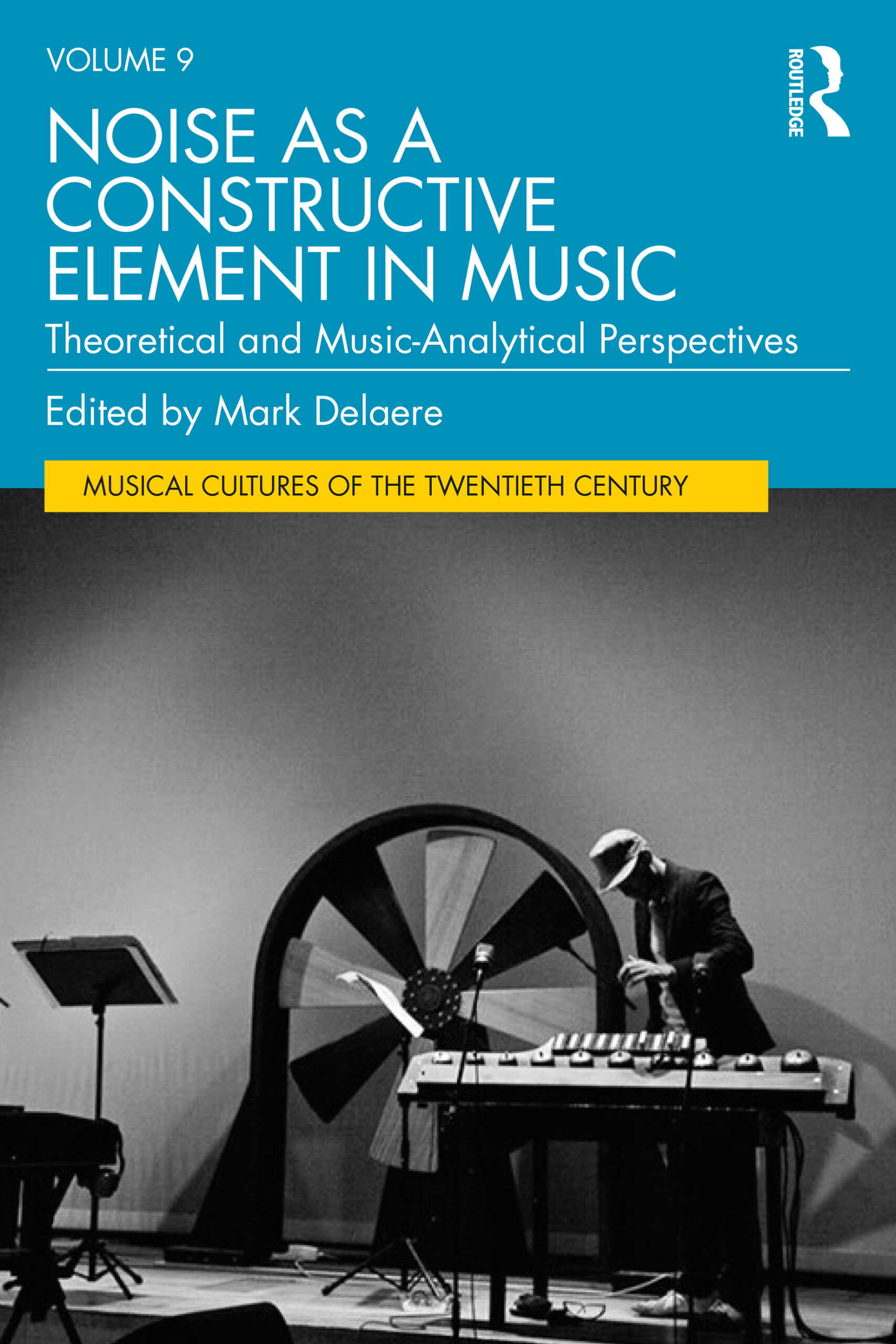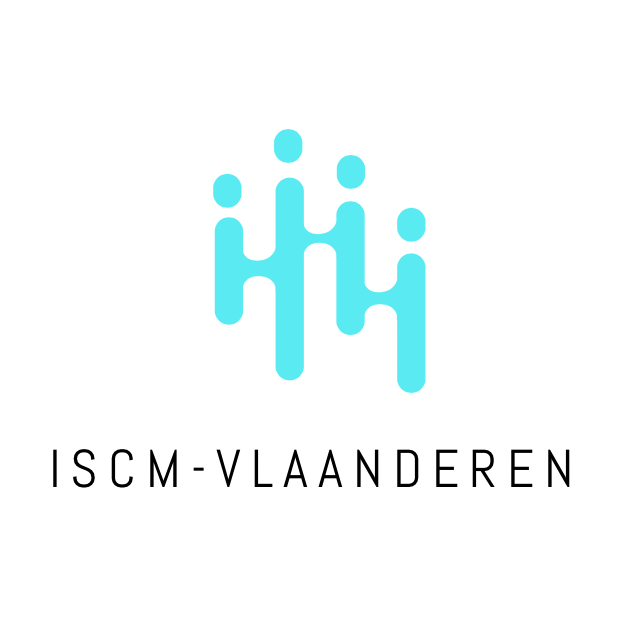#6 - winter 2022
What's that Sound?
Klaas Coulembier
In deze vaste rubriek van spOren nodigen we uit je oren te openen en even de tijd te nemen om te luisteren. Wat hoor je? Welke sensaties neem je waar? Klik vervolgens door om te vernemen wat je precies gehoord hebt. Verrast?
Dit fragment is een sprekend voorbeeld van het Tidal Orchestra, samen met de muzikanten van Radiohead ontwikkeld door Hans Zimmer in het nummer Ocean Bloom, als soundtrack voor de BBC-documentaire Blue Planet II. Onder de noemer ‘orchestral swarm’ is deze klank ondertussen ook te vinden in verschillende digitale sample-libraries. Opmerkelijk is dat Hans Zimmer – via een volledig andere route – een klankwereld creëert die op vele vlakken raakt aan de muziek van György Ligeti. Waar Ligeti zijn klankwolken ontwikkelt vanuit een doorgedreven polyfonie en dense dissonanten waarbij de individuele elementen opgaan in het geheel, is het Tidal Orchestra geïnspireerd op hoe in pointillistische schilderijen de individuele stipjes onzichtbaar worden wanneer ze samen een vorm of afbeelding vormen.
Een belangrijk verschil is dat Ligeti alles heel nauwkeurig vastlegt in complexe partituren, terwijl Zimmer de instructie geeft aan muzikanten om niet samen te spelen. Iedereen heeft hetzelfde eenvoudige materiaal en speelt het niet-gesynchroniseerd. Dat brengt ons dan weer bij de aleatoriek van John Cage en misschien vooral Witold Lutoslawski. En had Ligeti in zijn artikel Metamorphoses of Musical Form ook al niet aangegeven dat complete bepaaldheid en complete onbepaaldheid tot verrassend gelijkaardige resultaten kunnen leiden?
Dat dit soort klanken een groot cinematografisch potentieel heeft, mag dan weer blijken uit het bekende feit dat Stanley Kubrick de muziek van György Ligeti gebruikte in de film 2001: A Space Odyssey.
Muziek en noise lijken elkaar uit te sluiten. Muziek geldt algemeen als een geordend geheel van aangename klanken en noise als het tegenovergestelde: chaotisch, lelijk, agressief, soms zelfs doof makend. Wanneer noise toch voorkomt in een muzikale context kan het dus fungeren als weerstand tegen dominante culturele waarden, tegen de samenleving of tegen socio-economische structuren (inclusief die van de muziekindustrie). Deze oppositionele houding bevestigt de huidige opvattingen over noise als iets dat destructief is, een overtuiging die niet enkel wordt gekoesterd door hardcore rockbands, maar ook door ingenieurs en bedrijven die apparaten ontwikkelen om lawaai in onze dagelijkse omgeving te onderdrukken of te verminderen.
In tegenstelling tot de zojuist beschreven algemene opvattingen over noise probeert dit boek er het constructieve potentieel van te onderzoeken in de hedendaagse muziekpraktijk. In plaats van noise als een 'defect' te beschouwen beoogt dit boek er dus het esthetische en culturele potentieel van te bestuderen.
Binnen het onderzoeksveld van de noise music richten de meeste recente publicaties zich op sub-genres als psychedelische post-rock, industrial, hardcore punk, trash of rave, zoals ze zich ontwikkelden uit de rock en populaire muziek. Dit boek bevat ook studies over avant-gardemuziek (als deeldomein van de klassieke muziek), free jazz en klankpoëzie. Naast reeds gevestigde (sociaal-)historische en esthetische perspectieven op noise en noise music, biedt deze bundel ook bijdragen van muziekanalytici.
Mark Delaere (ed.), Noise as a Constructive Element in Music. Theoretical and Music-Analytical Perspectives (Musical Cultures of the Twentieth Century 9), London – New York: Routledge, 2022, 216 pp.
ISBN 978-1-032-20039-2
(Open Access vanaf februari 2024)
In de Inleiding analyseert Mark Delaere het begrip noise vanuit verschillende theoretische contexten en tradities en schetst hij een korte geschiedenis van de noise muziek. Deel 1 is gewijd aan The Joys of Noise: Historical, Theoretical, Aesthetic and Cultural Perspectives. Michael Goddard bespreekt recente ontwikkelingen in communicatietheorie en cybernetica die de invloedrijke interpretatie van Shannon en Weaver (A Mathematical Model of Communication, 1949: noise als storende factor in de transmissie van informatie tussen zender en ontvanger) nuanceren. Vanuit het domein van de Sound Studies houdt Karin Bijsterveld een pleidooi om de wisselende functies en betekenissen van noise doorheen de geschiedenis te bestuderen, met als case study de sirene. De titel van haar bijdrage is tegelijkertijd een oproep: ‘Save Our Noise: When Sound Out of Place Deserves Our Protection’. Barbara Titus toont haarfijn aan hoe omgevingsgeluiden die etnomusicologen proberen te weren tijdens veldopnames door de lokale gemeenschap net als een essentieel onderdeel van de muziekpraktijk beschouwd worden. Een voorbeeld uit de eigen etnomusicologische praktijk, de bestudering van de Maskande muziek uit Zuid-Afrika, versterkt haar argument. Paul Hegarty is de grootste autoriteit op vlak van (de geschiedenis van) noise muziek. Voor deze bundel levert hij een hoofdstuk waarin de smalle grens tussen noise en muziek tegelijkertijd bevestigd en in vraag gesteld wordt. Hij bespreekt daartoe voorbeelden uit de meest recente noise muziek van Richard Ramirez, Vomir en Aaron Dilloway, naast de sound art van Maria-Leena Sillanpää, Pharmakon en de Keniaanse metal band Duma. Makis Solomos analyseert hoe noise een steeds belangrijkere plaats is gaan innemen in de avant-garde muziek van Stravinsky en Antheil tot de recente voorbeelden van Agostino Di Scipio en Hildegard Westerkamp. Die historische ontwikkeling steunt op twee pijlers: morfologisch onderzoek door componisten die hun klankspectrum willen uitbreiden en sociale kritiek als protest tegen politieke repressie en economische exploitatie. De muziek van Iannis Xenakis belichaamt beide tendensen.
Deel 2 biedt Music-Analytical Case Studies. Simon Emmerson is een expert op vlak van de analyse van elektroakoestische muziek. Net zoals in die muziekpraktijk heeft ook noise muziek veelal geen partituur, en als die er al is biedt ze geen beeld van hoe de muziek werkelijk klinkt. De aandacht gaat daarom uit naar de analyse van opnames. Met analytische voorbeelden over de muziek van onder meer Ryoji Ikeda, Carsten Nicolai, Hildegard Westerkamp en Merzbow fungeert dit hoofdstuk als methodologisch fundament voor de analyse van noise muziek. Ingrid Pustijanac bespreekt noise in de context van spectrale muziek van de eerste generatie met analytische voorbeelden van Gérard Grisey, Tristan Murail en Hugues Dufourt, maar evenzeer van de meer recente ‘saturationisten’ Raphaël Cendo en Franck Bedrossian. De muziek van Helmut Lachenmann mocht niet ontbreken in deze bundel. Christian Utz toont aan de hand van diens strijkkwartet Gran Torso aan hoe ruisklanken zowel een onderdeel van een vormproces als een verstoring daarvan kunnen zijn. Jannis Van de Sande bespreekt de klankpoëzie van Henri Chopin als voorbeeld van vocale noise en ‘raw vocality’. Onder dit overzicht staat een analyse van Henri Chopins Dynamisme Integral, gelicht uit dit hoofdstuk (‘The Mic as a Scalpel – Skinning the Voice in Henri Chopin’s Sound Poetry’). Diederik Mark de Ceuster analyseert een solo-improvisatie van de Amerikaanse free jazz drummer Chris Corsano vanuit een dubbel perspectief: diens ‘preparatie’ van de standaard drumkit en de subtiele ondergraving van ritmische verwachtingen. Het laatste hoofdstuk handelt over de godfather van de noise muziek en de Japanoise: Merzbow. Marina Sudo biedt de allereerste musicologische analyse van diens muziek. De titel van haar bijdrage spreekt boekdelen: ‘Stretching Musicality to the Extreme: Vertical Composition in Merzbow’s Noise Music’.
In het voorjaar van 2022 zond Canvas ‘Sisters with Transistors’ uit, een fascinerende documentaire over enkele vrouwelijke pioniers van de elektronische muziek: Clara Rockmore, Daphne Oram, Bebe Barron, Pauline Oliveros, Delia Derbyshire, Maryanne Amacher, Eliane Radigue, Suzanne Ciani en Laurie Spiegel. Met de stem van Laurie Anderson als gids brengt de documentaire een stukje vergeten, doch goed gedocumenteerde, geschiedenis in beeld. Want hoewel er in de avontuurlijke jaren 1960-‘70 wel degelijk aandacht was voor het baanbrekende werk dat zij deden - de documentaire is immers volledig met bestaande archiefbeelden gemaakt -, ging hun bijdrage in de geschiedschrijving verloren of werd ze tot een voetnoot geminimaliseerd.[i]
Nog in de ban van de ‘Sisters with Transistors’-componistes kwam ik het Institut für Medienarchäologie op het spoor. Opgericht door de Oostenrijkse Elisabeth Schimana, die zelf vernieuwend muzikante en componiste in de elektronische muziek is, breekt IMA een lans voor elektronische kunst door vrouwelijke artiesten. De tiendelige reeks videoportretten ‘IMAfiction’ (2006-2018) is één van de eerste projecten die het instituut bij de oprichting op poten zette: vijf Oostenrijkse en vijf internationale artiesten worden in kaart gebracht: Liesl Ujvary, Rebekah Wilson aka Netotschka Nezvanova, Heidi Grundmann, Eliane Radigue, Andrea Sodomka, Maryanne Amacher, Anne La Berge, Electric Indigo, Beatriz Ferreyra and Elisabeth Schimana. De reeks valt op door de eigenzinnigheid waarmee de portretten neergezet worden. In samenspraak met de artieste zelf varieert de vorm van een klassiek interview tot een lecture performance of een eerder abstract kunstwerk, waarmee het telkens op een unieke manier een glimp van het brein achter de kunst weet te vatten. Naast het portret bevat elke dvd ook één of meerdere bonus tracks met opnames die elders moeilijk te vinden zijn.
Wie de uitzending op Canvas miste, kan ‘Sisters with Transistors’ gratis op ARTE bekijken. Voor de ‘IMAfiction’ portretreeks kan je in MATRIX terecht.
[i] Interview met documentairemaakster Lisa Rovner, geraadpleegd op 16/12/2022.
Geoffa Fells is componist, trompettist en beeldend kunstenaar die haar expertise in creatie en verbeelding gebruikt om muziek te componeren voor mensen die te maken krijgen met vooroordelen en stigmatisering. Ze richt zich op rechten van vrouwen en meisjes en heeft een interdisciplinaire praktijk die ze omschrijft als artistiek activisme/ARTIVISM, waarin ze de metafoor en strategieën gebaseerd op (persoonlijke) verhalen combineert met memorabiliteit en sociaal engagement.
Haar artistiek onderzoek (PhD) gaat over het componeren van nieuwe muziek waarin neurodiversiteit centraal staat. Zij gaat actief op zoek naar safe spaces waarin on(der)gehoorde stemmen uit onze maatschappij zich artistiek kunnen ontplooien. Haar belangrijkste doelgroepen zijn mensen met ernstige leermoeilijkheden en mensen met zware trauma’s. Geoffa kreeg een beurs van Guildhall om haar onderzoek verder te zetten via het zoeken naar sociale verbindingen, ‘grounding techniques’ en meditatie – technieken die bekend staan omwille van het vermogen tot het kalmeren van het zenuwstel. Voor de verschillende special schools waar zij werkt, heeft Geoffa haar sensory opera project gecreëerd met kinderen die aan PMLD (Profound and multiple learning disabilities) lijden. Voor dit project combineerde ze muziek met geanimeerde schilderijprojecties en zintuiglijke materialen.
In 2023 zal Geoffa een muzikaal project uitwerken op maat van kinderen van 8 tot 12 jaar, in samenwerking met MATRIX en Kinderwerking Fabota van Buurtwerk ’t Lampeke in Leuven. Dit nieuw werk zal gepresenteerd worden op Transit festival 2023.
What are your approaches to composition and visual art?/What’s intriguing you right now?
Geoffa:
I create magical, multi-sensory experiences using composition and immersive visual art and am passionate about using multi-sensory environments to include under-heard voices from people with mental health conditions, children with profound learning disabilities and those who are neurodiverse - broadly speaking, anyone with a ‘different’ brain. In my PhD, I have been researching how the neuroscience of safety can help myself, my collaborators, including Nth Tangent neurodiversity ensemble and audiences feel safe in my work. I have been diversifying play, meditation, social connection, movement and meditation as modes of making, to utilise their well-researched capacity to calm the nervous system.

I have DID, a dissociative disorder where different aspects of my ‘self' are in control of my behaviour at different times, each with their own ages, genders, memories, patterns of thinking and ways of sensing the world. There are big shifts in my art, depending on which identity is at the front. In DID, there is also either a partial or total wall of amnesia between each identity, so if switching occurs while working on a score, unless the previous occupant has written down their thought process, the current identity won’t understand why they have made the decisions they have made. Some of my identities have a passionate dislike of harmonic dissonance, others dislike traditional harmony and some of them prefer to express themselves through visual arts or play. They each have their own signatures and preferred styles and respond to different kinds of stimuli in the environment. I often feel that it’s my job to act as a mediator, ensuring that all of the voices are heard. If, in response to a question, one alter contributes sections of intensely technical passages for flute, then another writes a soul groove right next to it and another creates accompanying paintings with sellotape, this is a reflection of the unique architecture of my brain and I enjoy knitting these different threads together.
I have recently been exploring the parallels between my journey of learning to empathise with the alters in my own mind with the development of the empathy-based relationships that form a big part of my artistic practice. Having the regular experience of being another person who feels so incredibly different from me gives me a unique experience of empathy. Two of my alters experience periods of time where they are non-verbal. In learning to be compassionate, understanding and patient with them and their needs, I have also become exceptionally skilled at communicating non-verbally when working with children with severe and complex needs and learning differences.
To help introduce you to a fuller picture of me, I have left out the question ‘What are your approaches to composition and visual art/ What’s intruiging to you right now?’ - let’s see how they all respond.
Ruby:
If each loch, lake, river, ford, tarn or stretch of sea was a word, how would we capture or contain language? Would our notebooks be wet, or would reading simply require a boat trip? A rainy day would no longer be bad weather, but a deluge of new knowledge. People in the downpour forming paragraphs from puddles. Those with leaking roofs would be adding to the drenched dictionary with the contents of overflowing buckets. Flooding, a mere misunderstanding of sentence structure. And would a pond be an insult? F*** off you sludge-pond!
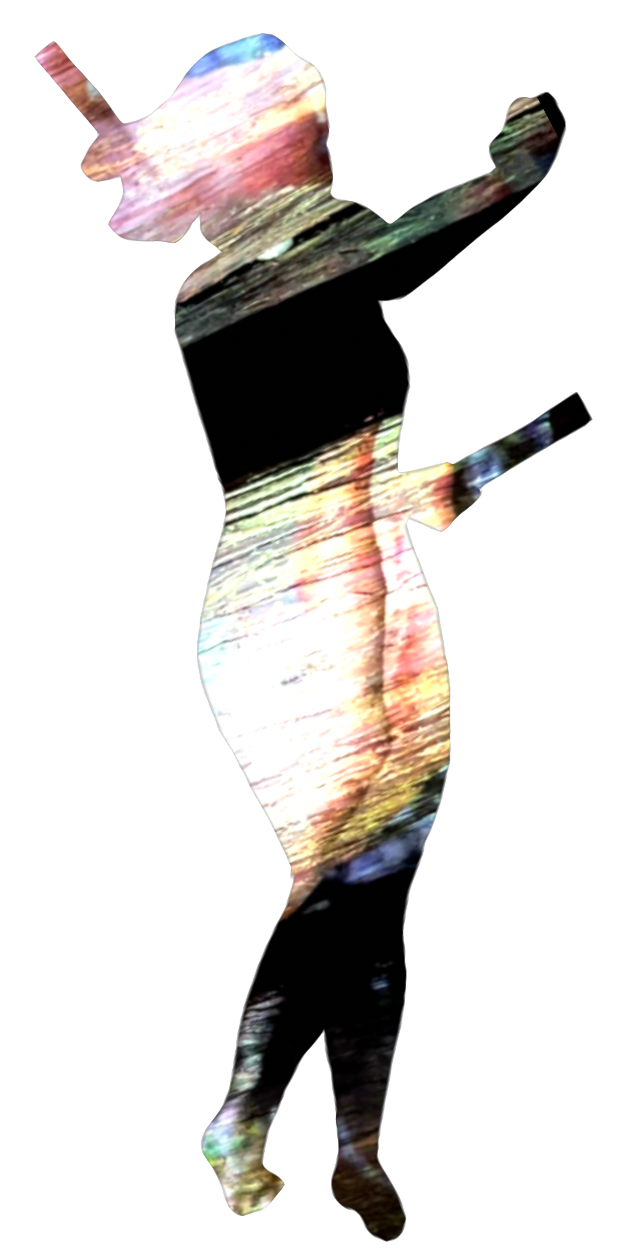
Masha:
I daydream constantly. I take the things I make into my daydreams with me. I can walk upon them as a landscape, I can pretend to be a codebreaker searching for hidden meaning. When we were creating our electroacoustic piece called Geoffian Moon, I pretended to be a Nasa scientist and all my decisions were led by imagined scientific findings made during daydreams with my paintings. Geoffian Moon uses the metaphor of a distant, icy moon to communicate the disorienting, otherworldly and sometimes confusing sensations that are experienced as part of having a dissociative disorder. My scientific findings were varied; discoveries of unexpected minerals, bubbling lakes below the ice and intriguingly shaped craters.
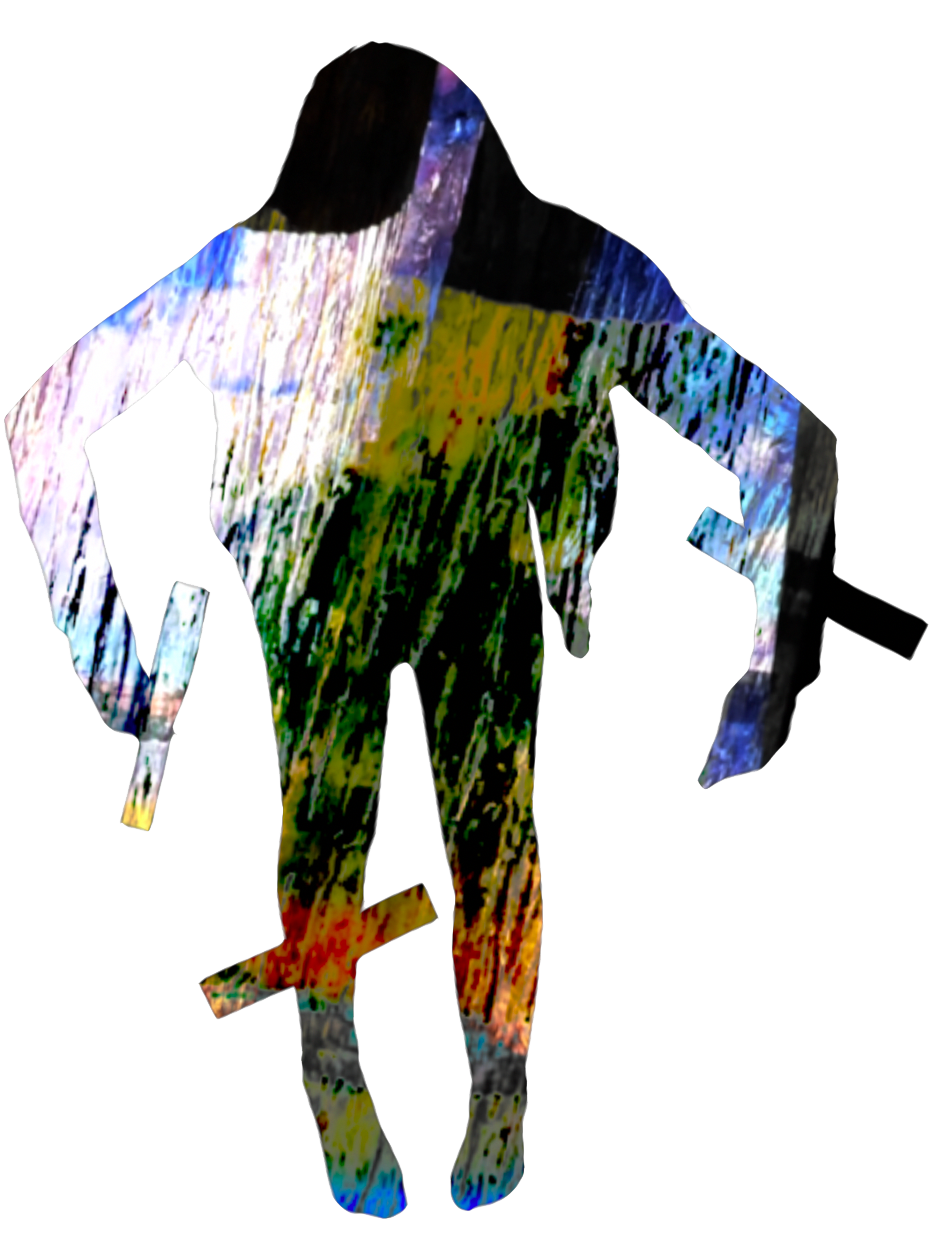
If I were a NASA scientist, I would be a risk taker, so probably an astronaut. I would conduct my research at the international space station. I would test how compounds behaved in outer space and I would use my findings as a basis with which to challenge the long-standing perspectives and frames back on Earth. The biggest change in perspective would happen each time I looked out from the space station to gaze back at the Earth. Our planet, the whole Earth, within my visual plain. It is everything, everyone. I would think of all the voices shouting, screaming, singing and wailing from beneath the clouds and I would feel strongly that the most important voices were not being heard. Listen to those who see the world in a different way, imagine how their perspective leads to a fuller picture. Right now, I can see the big picture, because I am in outer space, sensing and seeing the magnificence of the whole Earth in front of me.
Learn from a body that is different to your own. Dare to be led by them, dare to learn from them. Listen to all the different perspectives. Listen. Listen without bias.
Sophie:
I like to paint what I can see and feel. I am intrigued by layers, especially those that form by accumulations of residues over time. If I’m painting over something, layer upon layer, I’m most fascinated by the penultimate layer. It offers the last glimpses of the image being painted over, before it is gone completely. You sometimes don’t know which that penultimate layer will be, you have to paint the next layer to find out whether it will be the last. If I was employed to paint over grafitti, I would not be able to paint that final layer, I would want to see the visual traces of what was there before. I grew up near a village that was submerged by water to make a reservoir in the 1920s. When there’s a hot summer and drought, it re-emerges. What fascinates me most and captures my heart, is that the river returns, flowing along the exact same course, under the same stone bridge. When the reservoir is full again, does that river still exist? Is it just obscured? The layer of fog through which I observe the world keeps me questioning what it means to be real and what it means to exist. When we add layers of paint, or a flood, at what point does the matter that is laid underneath cease to be real? I also question this with sound. So many layers of sound, so many perspectives moving at so many speeds, that the recordings upon which the entire sound world was built can no longer be heard. I have to remember that they are there, otherwise they cease to be real.
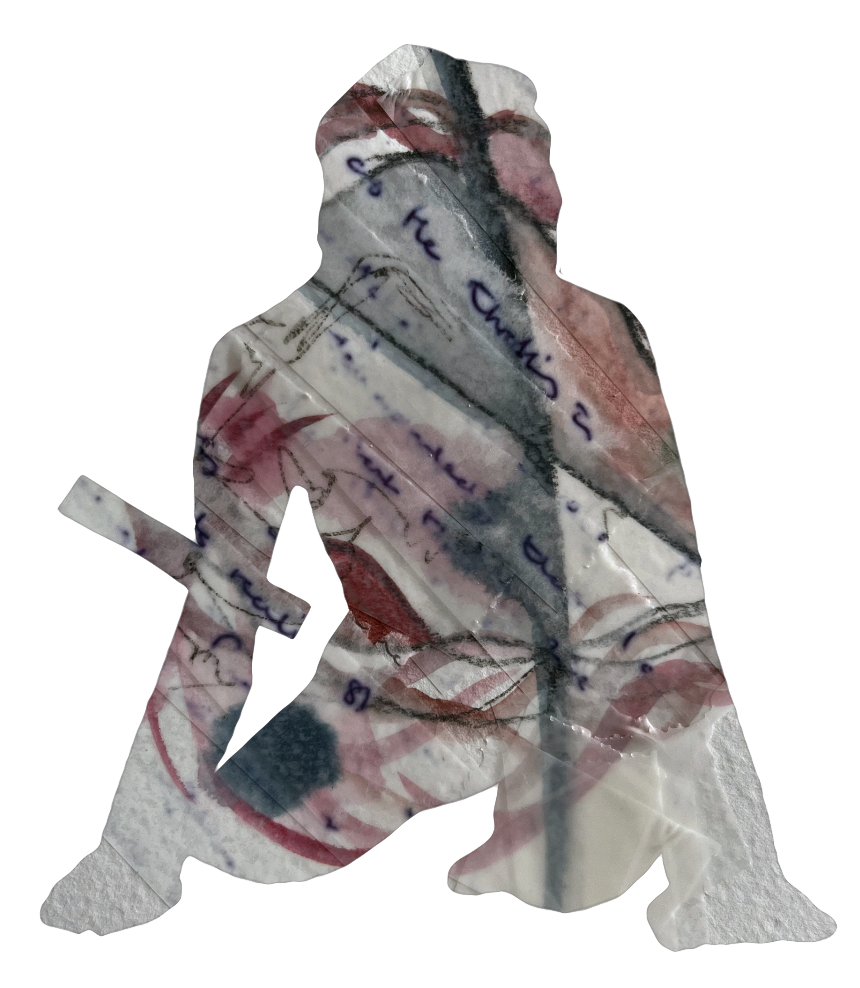
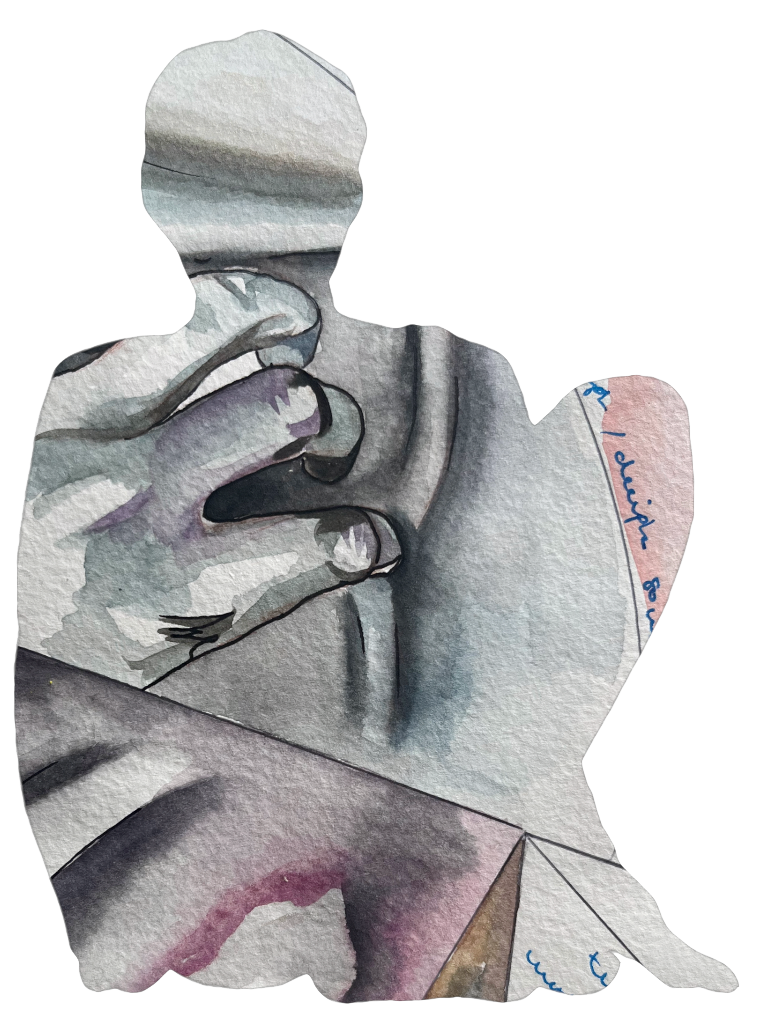
Edward:
I am interested in change. I freeze paint and watch it melt, I watch as salt crystals absorb vibrant pigments, I cut up paintings and rearrange them over and over. I do these things to understand what I’m feeling, what it means and to feel it change.
Ruby:
We all need sensory experiences for the good of our cognitive health, but we all have different sensory needs. If a piece is just sound, I paint in my sketchbook to fulfil the rest of my sensory needs. I take a little vintage cigar case filled with pans of watercolour everywhere I go. When I paint, sounds have so much more meaning to me. I paint the sensations in my body as the sounds move through me. I look at the audience; are they experiencing the same buzzing colours, pulsing dots and blossoming patches of fuzzy texture that I am painting? These beautiful patterns are what happened, in my body. And they will never happen in this exact same way ever again. Profound, I know!
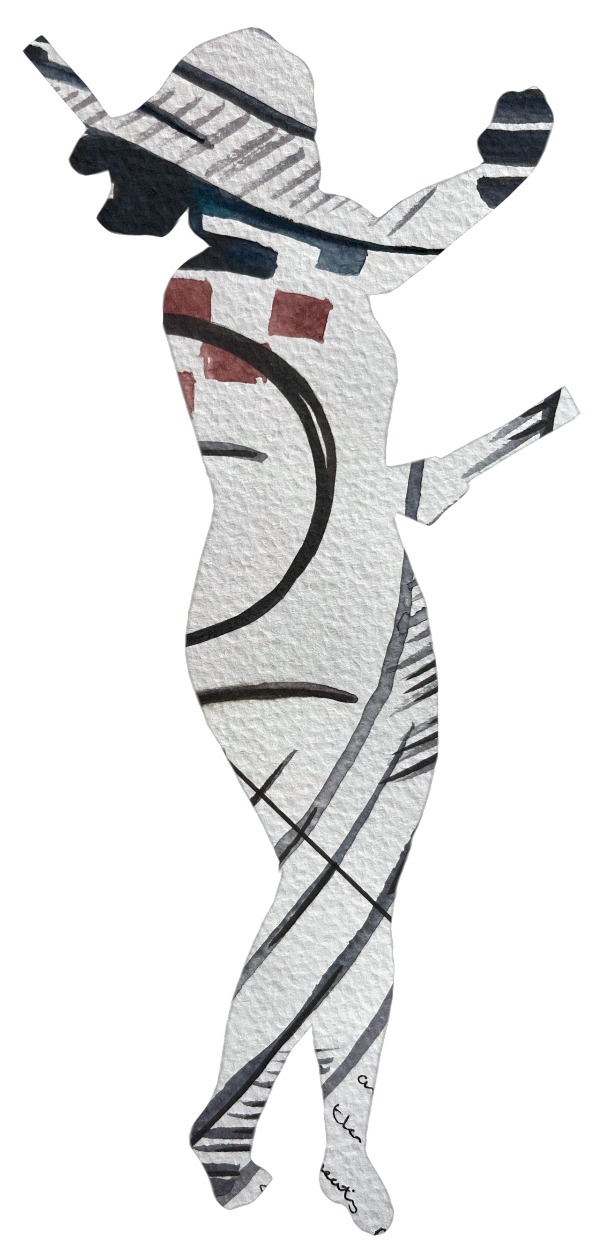
When I do intensive interaction with a child in my sensory music sessions, I start by copying their sounds and movements. It soon moves beyond copying. I sense that we are both experiencing similar patterns of joy, looping and catapulting through our bodies. It’s also innately musical, with rhythm, pitch and a sense of journeying together through sound and gesture. You can see it on our faces, we both feel it. It’s not his joy and my joy anymore, it’s our joy, our laughter. It’s so much easier to talk in this way, without words. I don’t have to look for the right words or search for the expected words, only to find the word cupboard stacked with visual clutter. Chatting without words is magical and freeing. We’re SO present. So ALIVE! We’re in this sensory space together with beautiful sounds and visuals and when the child communicates their ‘wow’, I repeat the same wow. And then they realise that I’ve replied wow to their wow, so they express something more, which I repeat again. And then we’re communicating. I know that our mirror neurones are having a party at this point, I imagine them lighting up in patterns like fireworks. He shakes his head, I shake my head. It’s New Years Eve with bursts of colour bursting into the sky in pluming patterns. He sings “oh why oh why oh ooh” and I sing “oh why oh why oh ooh”, whizz, whoosh, BANG go our mirror neurones!
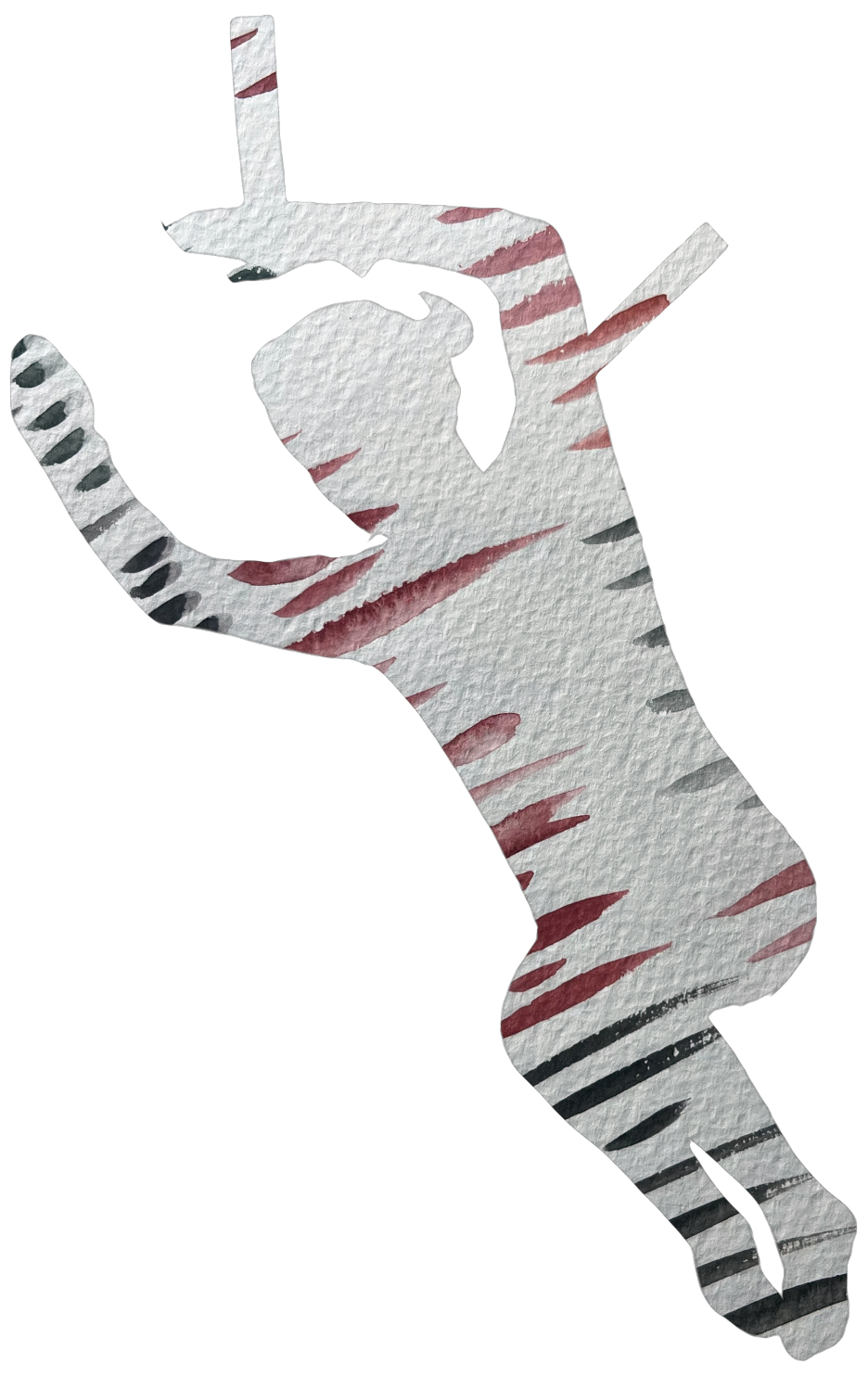
Smudge:
There was once an old woman with a wooden leg who stepped in a puddle. The water in the puddle went brown because she’d stashed the hollow of her leg full of used tea bags. She liked her tea weak, so there was still plenty of staining power in each bag. She lived in Ireland, where it rains a lot, so she turned many, many a clear puddle brown.
Geoffa:
I used to be very selective about what I included from the experience of my other identities in my final works. If Smudge just wants to go swimming, how can that possibly be helpful in the composition of an opera? I now try my best to allow all of my identities’ perspectives to be part of the work we are making together. An activity like swimming can actually be very useful in the context of multi-sensory composition, it calms the nervous system because it is movement-based. It is also a stunningly beautiful multi-sensory experience of its own to be immersed in the silky rich blue. I use phenomenology and daydreaming to bring embodied experiences like swimming into my arts practice. Almost every facet of my practice is now both a positive contributor to my well-being as well as being a mode of making art. This means that all the voices that make up me are being heard and that the other neurodiverse voices that I work with can be better heard too.
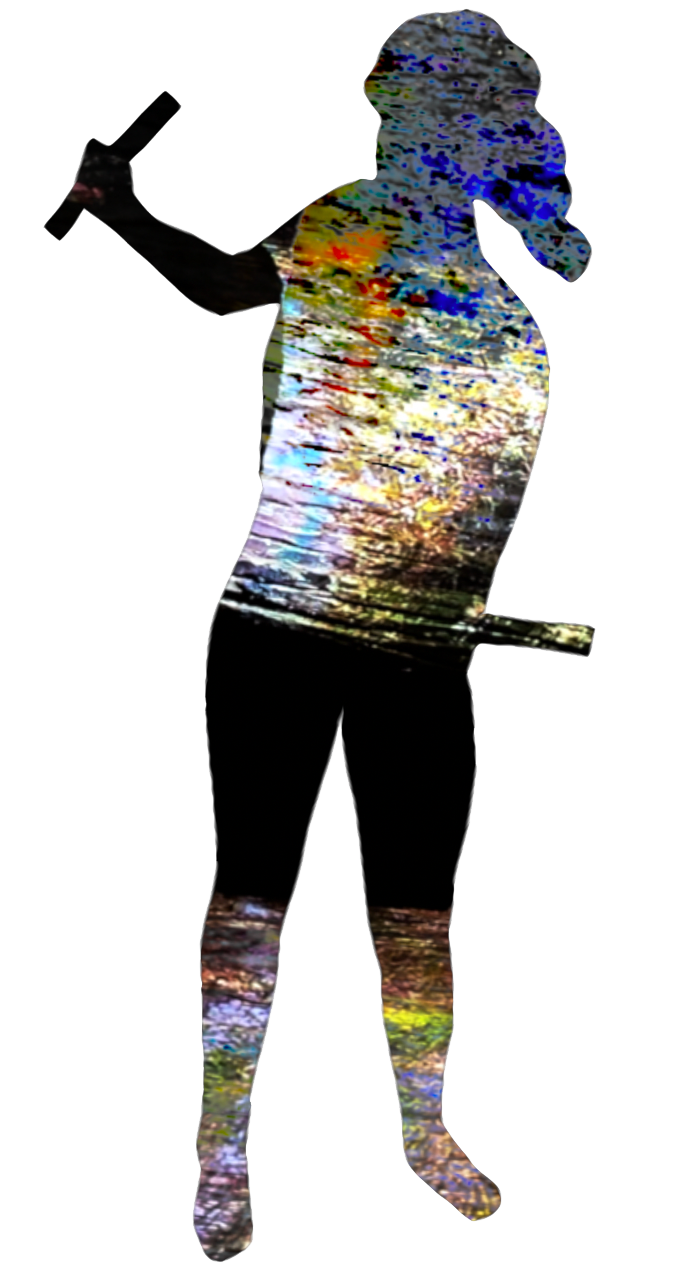
spOren is een initiatief van ISCM-Vlaanderen & MATRIX [Centrum voor Nieuwe Muziek]. Via een nieuwsbrief communiceert het redactieteam verschillende bijdragen met betrekking tot nieuwe muziek. Geïnteresseerden kunnen zowel met een vraag (schrijven jullie iets over …?) als met een aanbod (ik heb iets geschreven over …) aankloppen bij de redactie. Op die manier ontstaat er een netwerk van input en output, gedachtewisselingen en kennisdelingen over nieuwe muziek die de liefhebber verheldering en begeestering verstrekken.
Schrijf je hier in op de spOren-nieuwsbrief!
